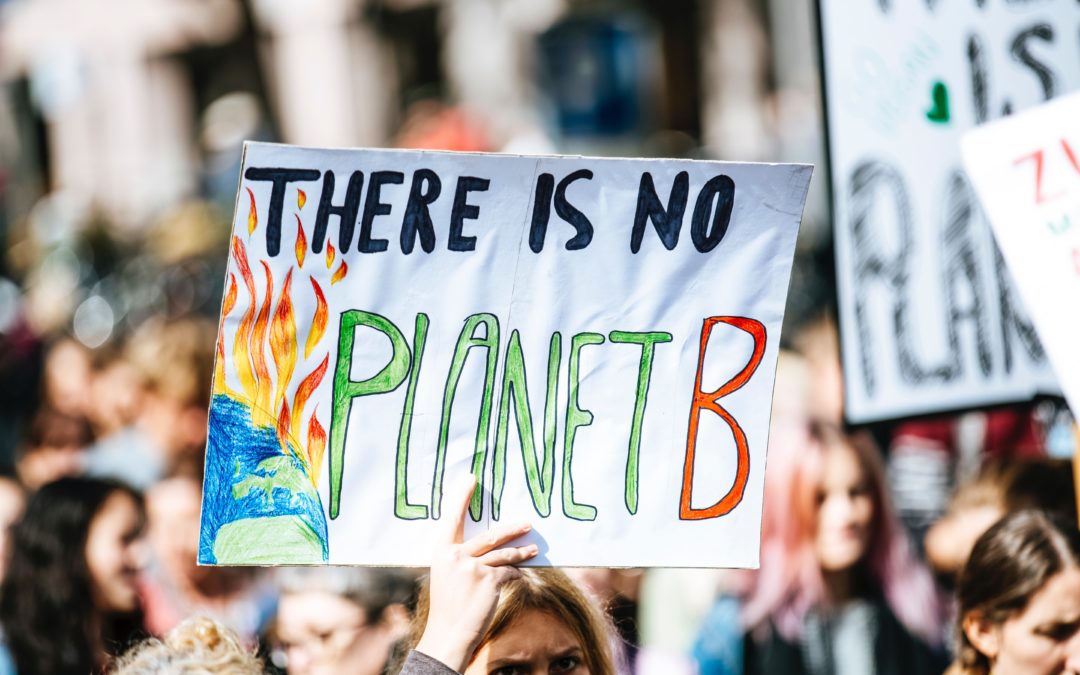The following is a contributed piece by guest writer, Christa Avampato.
This is the first segment of a two-part series. To read part two, visit Going Blue: Transforming the Oceans’ Vicious Cycle into a Virtuous One with Biomimicry.
Humans are an ingenious, determined, and passionate species. It’s this combination of qualities that has pushed us to invent and innovate for thousands of years and has particularly driven the pace of our innovation over the past 250 years since the first Industrial Revolution began. In hindsight, we now recognize that in our production processes, we have not always been aware of our impact on the planet or the unintended consequences of our inventions that paved the way for our current climate change crisis. The data shows that human activity has exponentially accelerated climate change at an unprecedented rate.
But we aren’t doomed! In the next decade, we can harness our creativity and combine it with a heightened concern for the health of the planet to protect what we have now and adapt to, and possibly mitigate, the effects of climate change. Through this conservation, we can also learn strategies that species alive today have mastered to solve human design challenges and preserve the ecosystems that we all call home. Who are our mentors? How can industry, corporations, and individuals shift consumption with innovative ideas that move us away from fossil fuels, protect species, and give humans a sense of purpose and empowerment in the face of crisis? And how can government support that movement through the Green New Deal?
The Basics of the Green New Deal
The need for reform is the foundation of the legislation known as the Green New Deal (House Resolution 109), and it is one avenue by which policy could change our economy and shift our environmental impact to one that is regenerative. Designed to address climate change and its corresponding economic inequality, the Green New Deal is a set of government policy proposals to reverse the damage we’ve done to the natural world. If the Green New Deal is adopted and becomes law, the creative skillsets provided by nature-inspired design through biomimicry will be in high demand.
The Green New Deal draws its inspiration from the October 2018 report entitled Special Report on Global Warming of 1.5°C by the Intergovernmental Panel on Climate Change and the November 2018 Fourth National Climate Assessment report. Both reports paint an honest picture molded by the consequences of human activity up to this point: increased extreme weather, flooding from sea level rise, severe loss of species and biodiversity, and the economic cost of trillions of dollars.
‘The How’ of the Green New Deal
The Green New Deal does more than just predict further harm to the planet if we don’t take action now. It also offers two goals that in combination will keep the climate crisis from reaching catastrophic levels. We must keep the global temperature rise below 1.5°C by committing to reduce our greenhouse gas emission by 40-60 percent of the 2010 levels by 2030 and committing to net-zero emissions by 2050.
Goals are meaningless unless we also do the difficult and necessary work of building the steps to reach them. In addition to the justification for why we need to stop contributing climate change, the Green New Deal also offers examples of what to do to achieve these goals. However, the Green New Deal doesn’t offer the how. That work falls squarely on the shoulders of businesses and local governments. And biomimicry could be the key to paving that path.
The Road to a Successful Green New Deal is Paved by Biomimicry
Biomimicry will play a crucial role in the success of the Green New Deal, because at its crux biomimicry is the study of nature’s sustainable designs and the application of those design principles to the human-built world. With nearly four billion years of R&D focused on creating materials and processes that promote life, nature is our best design teacher and inspiration for a healthy world that supports all beings.
Biomimics are poised to take the stage as the positive change agents, champions, and thought leaders in this vital work. If ever there was a time to put biomimicry into practice, it’s now. There are many interdisciplinary areas in the Green New Deal where biomimics can take leadership roles that will have a positive impact on the future of our environment.
Green job creation
The secret sauce of a career in biomimicry is the ability to understand the language and motivations of businesspeople, engineers, designers, and scientists, and then build the bridges of translation between them. Green job creation programs in every sector of the economy will need this translation capability for its leaders, and biomimics are perfect for these key roles.
For example, the world’s largest commercial carpet manufacturer, Interface, Inc., furthered innovation by collaborating with Biomimicry 3.8. As a result of working with Janine Benyus and her team, the company introduced a carpet line inspired by random pattern formation in nature; and in record time, Entropy™/I2 rose to become Interface’s top-selling product, representing 40% of its carpet tile sales. The result of innovations like these is clean, efficient technology that brings the supply chain, and our culture, closer to a more sustainable future.
Materials science
It’s no secret that most of our tangible goods need a massive sustainability makeover. Whether that involves their ingredients and materials, packaging, or the disposal of what’s left of these products when we’re done with them, nearly every product we buy and use today could be made with safer ingredients tomorrow.
This idea of Cradle to Cradle® product development will only become more critical as we see climate change increasingly impact our communities and economies. Nature already has closed-loop materials and processes. Biomimics are poised to lead the way in remaking our tangible goods so they extract the more successful functional strategies and maintain strong performance needs. Personal care, household products, textiles, and electronics are just a handful of the industries that will all need the skillsets of biomimics.
Through the Biomimicry Institute’s Launchpad program, a New York City team created Werewool while learning and applying biomimicry thinking with a mission to generate a new material science process for textile production, which traditionally relies heavily on petrochemicals. The Werewool team turned to nature to improve the textile industries’ processes, using a biomimetic approach to emulate the inherent performance properties that nature has evolved to have vibrant color for textiles, without the destructive impact of traditional synthetic fibers. And next they are working to model nature’s durable stretch and waterproof performance capabilities. More innovative techniques for material sciences can be fueled by infusing biomimicry into the design process.
Higher education
Over the past decade in business, many companies have adopted the credo that every company is now a tech company. Advanced technology understanding, particularly in software after the smartphone and mobile app explosion, is now a requirement for many jobs.
Like technology, climate change will also have a significant impact on every industry in the not-too-distant future. Science literacy, and the translation work of science into areas such as business, engineering, and design, in undergraduate and graduate education has to start now so that our future workforce will be prepared for the job market they will enter.
Biomimicry can be folded into all of these areas in higher education, and biomimics can teach these skills as well as partner with colleges, universities, and trade schools to reframe and revamp curriculum and research efforts with this science literacy lens.
If we start teaching biomimicry at a young age through programs like the free Biomimicry Youth Design Challenge, we can create a strong pathway to guide this thinking for the rest of their lives. Tools already exist in higher education with the Biomimicry Global Design Challenge and programs like Arizona State University’s MS program in Biomimicry, and there is more opportunity to influence education in strengthening the critical thinking skills employed by biomimicry.
With the impending threats of climate change, it’s a matter of when, not if, we will have a Green New Deal in place. Eventually, we will have to adopt nature’s design principles, such as resource efficiency and life-friendly chemistry, if we want to survive and thrive as a species. The transformation of our economies and communities due to climate change presents the field of biomimicry and its practitioners with an unprecedented opportunity to be the positive change we wish to see in our ever-changing world. The Green New Deal is the call to action. Biomimicry is the answer.
Recently we’ve heard talks of another new deal that is turning the conversation blue. Stay tuned for part two to read about how oceans are being added to the agenda.
Disclaimer: The views and opinions expressed in this article are those of the authors and do not necessarily reflect the official policy or position of the Biomimicry Institute.
 Christa Avampato is a writer and the founder of Double or Nothing Media in New York City. She is currently a graduate student in the Biomimicry Program at ASU.
Christa Avampato is a writer and the founder of Double or Nothing Media in New York City. She is currently a graduate student in the Biomimicry Program at ASU.
Twitter: @christanyc | Instagram: @christarosenyc

